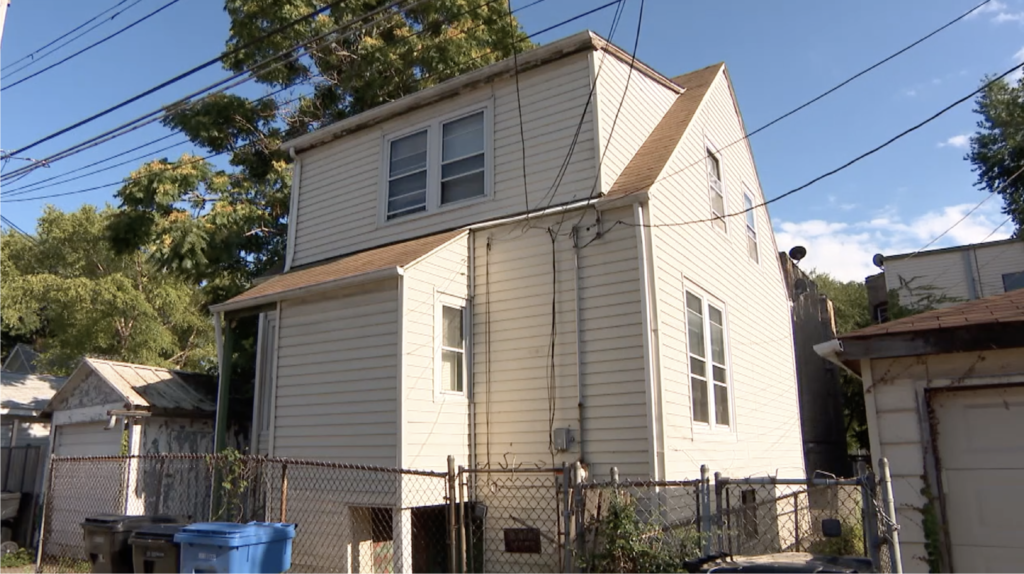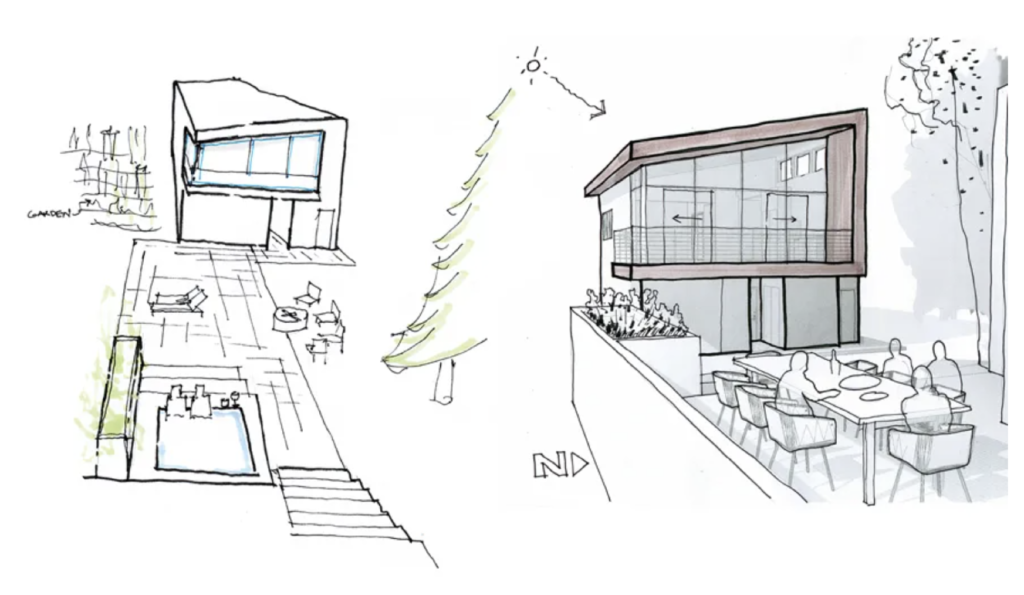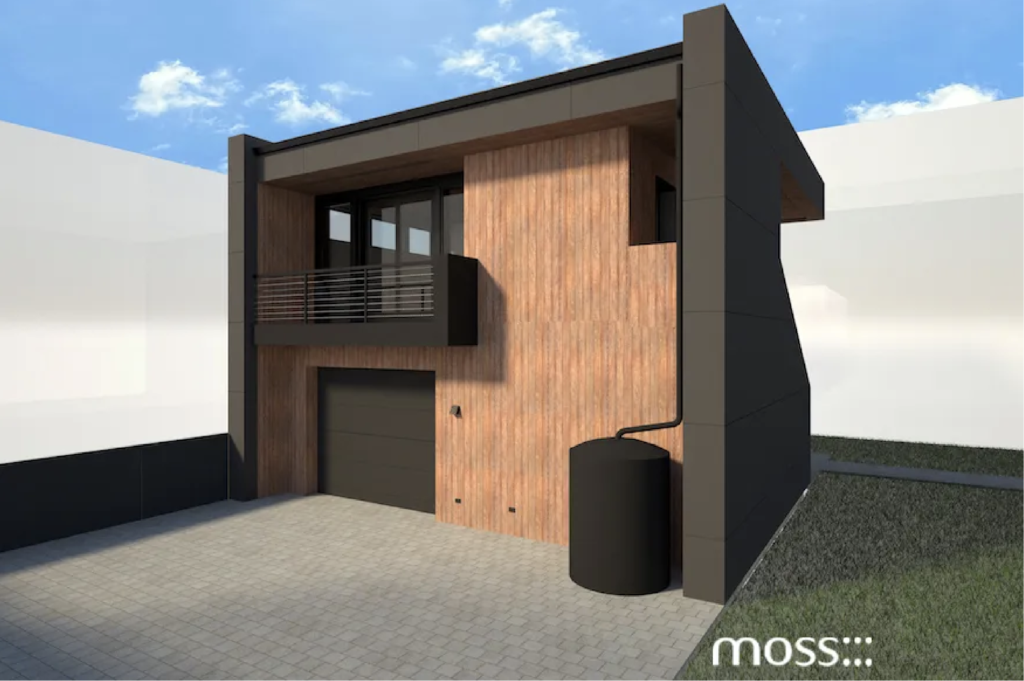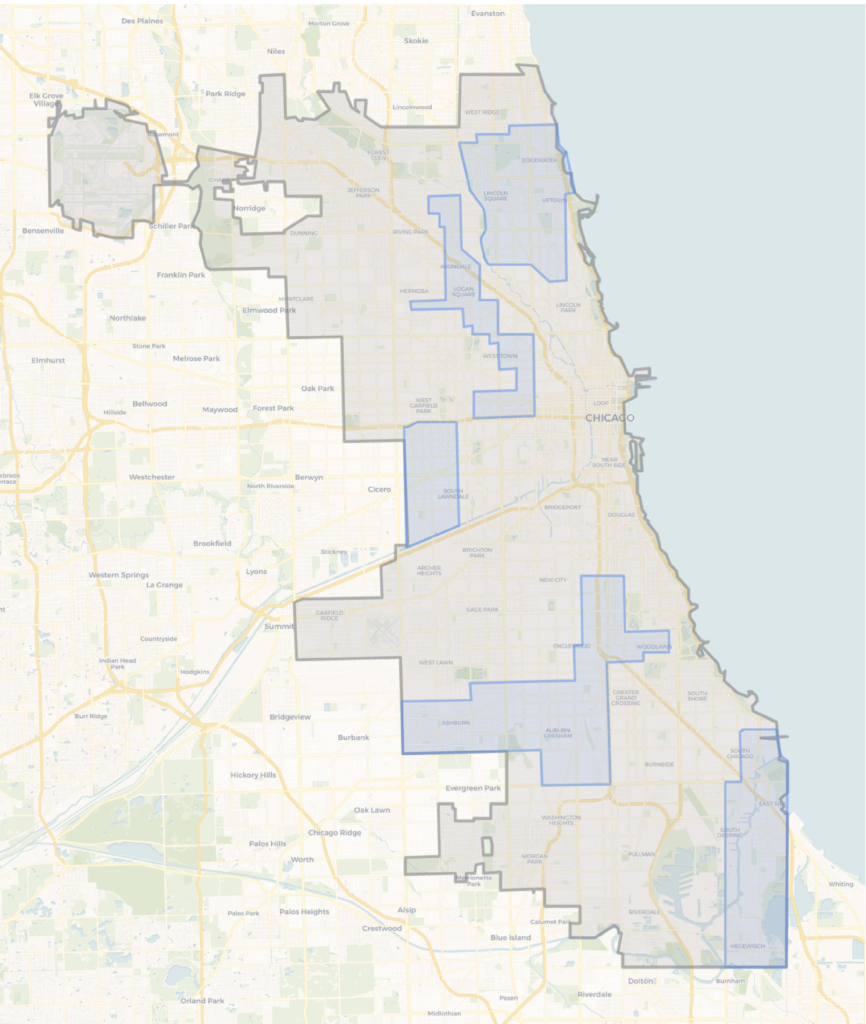Chicago YIMBY deep dives into the Chicago Additional Dwelling Unit (ADU) ordinance six months after its launch across various areas in the city. ADU’s have a long history not only in Chicago, but nationally and is seeing a resurgence as the demand for affordable housing and new ways to gain equity are increasing as well. The local ordinance repeals laws created against them over 60 years ago in select pilot areas and went into effect May 1, 2022 after being voted on late last year.

Image of grandfathered-in ADU via WTTW
What Is An ADU?
An Additional or Accessory Dwelling Unit goes by a variety of names, most commonly known as a coach house in Chicago, and its history dates back to the 1800s. Many early city homes would build a stable and storage space for their carriages which sometimes included a residential component on the same floor or on top for the coachmen and groomers. As horse-drawn transportation faded and cars became more prevalent, the stables were turned into garages with the rest turned into rentable living quarters according to WTTW.
Much of the time an ADU will be a relatively smaller residential component in the rear of an existing home or three-flat, but it can also be the transformation of a not typically occupiable space like an attic or basement into a living unit as well. They can also be purpose built and not just a re-use of an existing structure, prefabricated options exist and can be added to a backyard and garages can be de-converted into a rental as well. Due to this, they became a popular low-cost option leading to locals worrying about overpopulation and pushing for their ban in 1957.

Rendering for an upcoming Evanston ADU via Moss Design
What Was Banned?
65 years ago ADU’s were banned in Chicago, this meant no more could be built or converted as well as banned major renovations on existing units. This also stretched to restrictions on how they could be used; to continue to be grandfathered in the apartment cannot be vacant for longer than a year, if it is then it will no longer be legal to rent it out ever again and must be absorbed back into the original property. This has led to a lot of illegal renovations and loss of housing stock, with only around 2,600 legal ADU’s remaining in the city.

Rendering for an upcoming Lincoln Square ADU via Moss Design
What Is The Ordinance?
Led by local advocates and Steven Vance from Streetsblog Chicago, the ordinance was seen as a way to address the demand in affordable housing and provide local homeowners additional income in the face of rising interests and aging populations. Since May, limited ADU’s are allowed to be built within five pilot areas designated to touch parts of various neighborhoods across the city, according to Moss Design:
- North: Covers part of West Ridge, Edgewater, Uptown, Lake View, North Center, and Lincoln Square.
- Northwest: Covers part of Albany Park, Irving Park, Avondale, Hermosa, Logan Square, West Town, Near West Side, and East Garfield Park.
- West: Covers part of East Garfield Park, West Garfield Park, North Lawndale, and Little Village.
- South: Covers part of Ashburn, Auburn Gresham, West Lawn, Chicago Lawn, Washington Heights, Roseland, Chatham, Greater Grand Crossing, Englewood, West Englewood, Washington Park, and Woodlawn.
- Southeast: Covers part of South Chicago, East Side, South Deering, and Hegewisch.

Map of ADU Ordinance pilot zones via Chicago Cityscape
The pilot is creating a gradual return of the property type in hopes of keeping the money hyper-local and away from developers with the following restrictions and benefits per the city’s ordinance info page:
- New coach houses must be shorter than 22 feet above grade and smaller than 700 square feet in size and 60 percent of the rear setback.
- None of the residences can be used as vacation or short-term rentals like AirBnB.
- Only two ADU permits are allowed per block per year in the West, South, and Southeast areas which can be either conversions or new construction, each permit can be for multiple residences within.
- The property owner must live on site except in North and Northwest areas, but for all the home must be a minimum of 20 years old and built in a multi-family zoned area.
- In the North and Northwest areas, the ADU may be built prior to the principal residence.
- If building more than one-residential unit within the ADU, half of them must be reserved for those making less than 60 percent Area Median Income (AMI).
- If the owning household makes less than 80 percent AMI, loans of up to $25,000 can be applied for to use towards new or existing units.

Rendering for an upcoming Logan Square ADU via Moss Design
What Is The Impact?
ADU’s are seeing a comeback nationally, they are great for aging-in-place where elderly people can downsize but stay near family, are relatively affordable, and create gentle density which in return is climate friendly. A similar reform was passed in California in 2016 and since ADU’s make up one in four homes permits in LA, with 5,000 permitted in 2021 alone and account for 12-percent of all new home permits in the state according to Action Network.
In Chicago 106 permits have been issued for 134 residential units across the trial zones since it was approved. Recently AARP held an informational event with a prefabricated tiny home for display at Daley Plaza over the summer in order to bring more awareness to the program. It is already seeing a lot of success and although it is meant to last three years prior to a final decision being made, multiple politicians are currently pushing to enact the ordinance city-wide sooner, their petition can be signed here.
Subscribe to YIMBY’s daily e-mail
Follow YIMBYgram for real-time photo updates
Like YIMBY on Facebook
Follow YIMBY’s Twitter for the latest in YIMBYnews


Ian/YIMBY- Love to take an even DEEPER deep dive on this ordinance. Opportunity is huge, but 106 permits and 134 units is “deeply” underwhelming. Most ADUs are simply playrooms, workout rooms, offices and apartments for family members in wealthy neighborhoods. Not enough incentive for multi family owners to expand their buildings. In other words too expensive, and little financing for break even or less economics. Once again giant opportunity, but the even bigger local government/bureaucracy continues to get in the way from a win/win situation.
It will be interesting to see if/how Carlos Rosa-Ramirez tries to scale this idea now that he is the head of the Zoning Committee and presumably has a good deal of influence to throw around. I am in full agreement with the commenter above, tho. There is no getting around how absurdly expensive new construction is, the incentive of a homeowner to add one of these units is offset by the hassle, cost, and presumably property tax increase that all come with them.